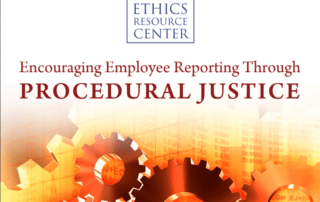Contained in this category are any whitepapers or working group reports that the Ethics & Compliance Initiative helped to create.
Blue Ribbon Panel: Principles and Practices of High-Quality Ethics & Compliance Programs
Ethics and compliance (E&C) has become an identifiable function in many organizations today. In some cases, E&C programs are born out of necessity in the aftermath of wrongdoing. In many other instances, programs arise from an organizations voluntary investment in the strategic goal of conducting business with integrity. Regardless of why they were created, E&C programs by their very nature play an important role in the viability and ongoing success of any institution. The size, scope and structure of an E&C program vary with the makeup of an organization. A program in a large, publicly traded multinational looks altogether different from an effort in a small, privately held business. Even more different are E&C programs in nonprofit and government entities. Nonetheless, the fundamental purpose of the function is almost universal. An organizational ethics and compliance program exists to: • Ensure and sustain integrity in the organizations performance and its reputation as a responsible business. • Reduce the risk of wrongdoing by parties employed by or aligned with the organization. • Increase the likelihood that, when it occurs, wrongdoing will be made known to management within the organization. • Increase the likelihood that the organization will responsibly handle suspected and substantiated wrongdoing.







